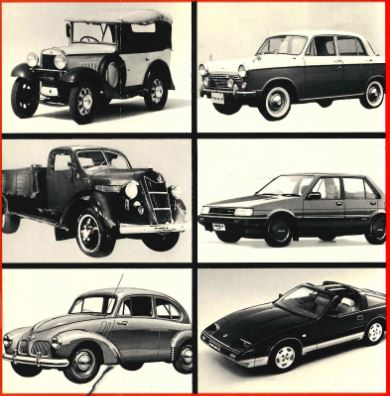Milestones of the Japanese car industry
How it all started
The history of the Japanese car industry goes way back to 1904 when Torao Yamaha manufactured the first ever-domestic bus powered by a steam engine. Few years after the first gas engine car was produced and it was nicknamed ‘Takuri’. The Japanese car industry was quite mediocre at the time. Major American car manufacturers like Ford and GM had their factories in Japan and they dominated the world market.
In 1939, the Japanese government made a bold move that ensured foreign manufacturers were forced out of the country. This was a move that help the JDM to stand on it’s own. While companies such as Toyota, Nissan, Isuzu and Kurogane built trucks and motorbikes for the imperial Japanese Army, the commercial production of vehicles started après- WWII.

After the World War II, Japan like many other countries needed a boost in their economy. The government funded local manufacturers and encouraged them to produce innovative vehicles. The local market began producing more cars than before and Japan restricted importing vehicles to promote the local industry.
In the early 1950’s Japan’s annual vehicle production was merely 10,000 but slowly but steadily the numbers grew over the years. Japan entered the export market and started exporting the same numbers as their European counterparts. Japanese cars had an advantage over American and European cars due to its fuel efficiency. With the fuel boom in the 1970’s Japanese cars became and instant hit since people were looking for vehicles that were fuel-efficient. The US market which was reluctant to export Japanese cars before opened doors with the increase in demand.
Current status
The automotive industry in Japan is the third largest in the world. The industry employs over 5 million people and it has a huge impact in the country’s economy. The four major players or the Big Four in the automotive industry ate Toyota, Honda, Nissan and Suzuki. Then follows companies like Mitsubishi, Daihatsu, Mazda, Subaru, Isuzu and Lexus.
Similar to all other industries in the world, the Japanese automotive industry has also been impacted by the COVID-19 pandemic. Japanese automakers had to make a decision to close their production plants for safety sake. While the vehicle industry has seen a 23% decline in June 2021, The Big Four is still leading. However, with there stability the companies have vouched not let the pandemic affect people’s jobs and created a special fund to help those who are impacted financially.
Future of the Japanese car industry
One reason that the Japanese car industry has been so successful in attracting customers is that they think ahead of the others. Developing renewable green technologies and electric cars was quite an innovative move that gained the market even more popularity among the global market. Cars such as Toyota Prius which was the first mass produced hybrid car was a huge success and it has won the hearts of many and made other manufacturers to follow suit. The future of the Japanese car industry looks even brighter and with access to Japanese auto auctions, car owners get to choose their dream car at affordable prices.
Japan Motor Co., Ltd. Purchases and export brand new cars. For some models it takes 6 months in waiting list, but it worth according to our clients feedback.
 06.06.2025 / 16:06
06.06.2025 / 16:06